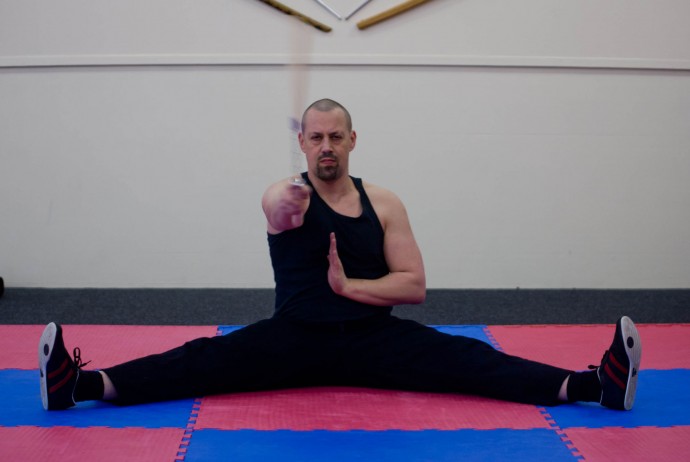This tutorial covers two aspects of nunchaku technique – control and ‘nunchaku lines of movement’.
Let’s look at control first.
Control
What you ALWAYS need to remember when spinning the nunchaku in any way are the forces that are acting on their movement. So if you hold one baton out in front of you with the free baton just hanging, then gradually start to spin the free baton horizontally like the hanging chairs on a merry go round, the baton will start to rise as the speed of the spin increases – until eventually it will appear more like the blades of a helicopter. What’s happening here? It’s an easy move. The force of gravity remains constant and as long as you maintain a steady force, the nunchaku will spin in a uniform way.
Now look at what happens if we spin the nunchaku like the wheels of a bike, on the vertical plane – as shown in the video. Most people find this much more tricky. Why? Because the effect of gravity, while constant, has a varying effect on the movement. When the free baton is rising it is working against gravity so we need to adjust the force we use to compensate. When the baton is falling it is working with gravity so we need to hold back the energy we put into the movement. With feeling and practise this becomes easy.
Working with natural forces
In fact, with practise, we don’t need much force at all to keep the nunchaku spinning on the vertical plane. Gravity does most of the work and we just put a little bit in on the upward motion to get the baton over the hill.
Leave them to it
As you can see on the video, once you get a feel for nunchaku movement and the forces involved, they need very little assistance from you. Once you realise that only the smallest amount of energy needs to be transmitted through the hand to keep their movement steady, you can relax the rest of the body – the arms, the shoulders, the waist – and you are free to move.
Body movement without changes in nunchaku force
If you really feel the forces that cause the nunchaku to spin, and you free the rest of the body to be relaxed and do its own thing. You can move around the nunchaku while they continue their movement. Your body moves, your hands move but the nunchaku motion remains constant on the vertical plane. You are working with a ‘line of movement’
If you look at the video again, you can see even more clearly that the secret of movement around the nunchaku, of moving on the line and on the line, is all about an intimate understanding of the forces involved in their motion. No tension is required. Just feeling, intuition and some imagination.
If you have any questions or would like more in depth tuition, get in touch.


 Follow
Follow